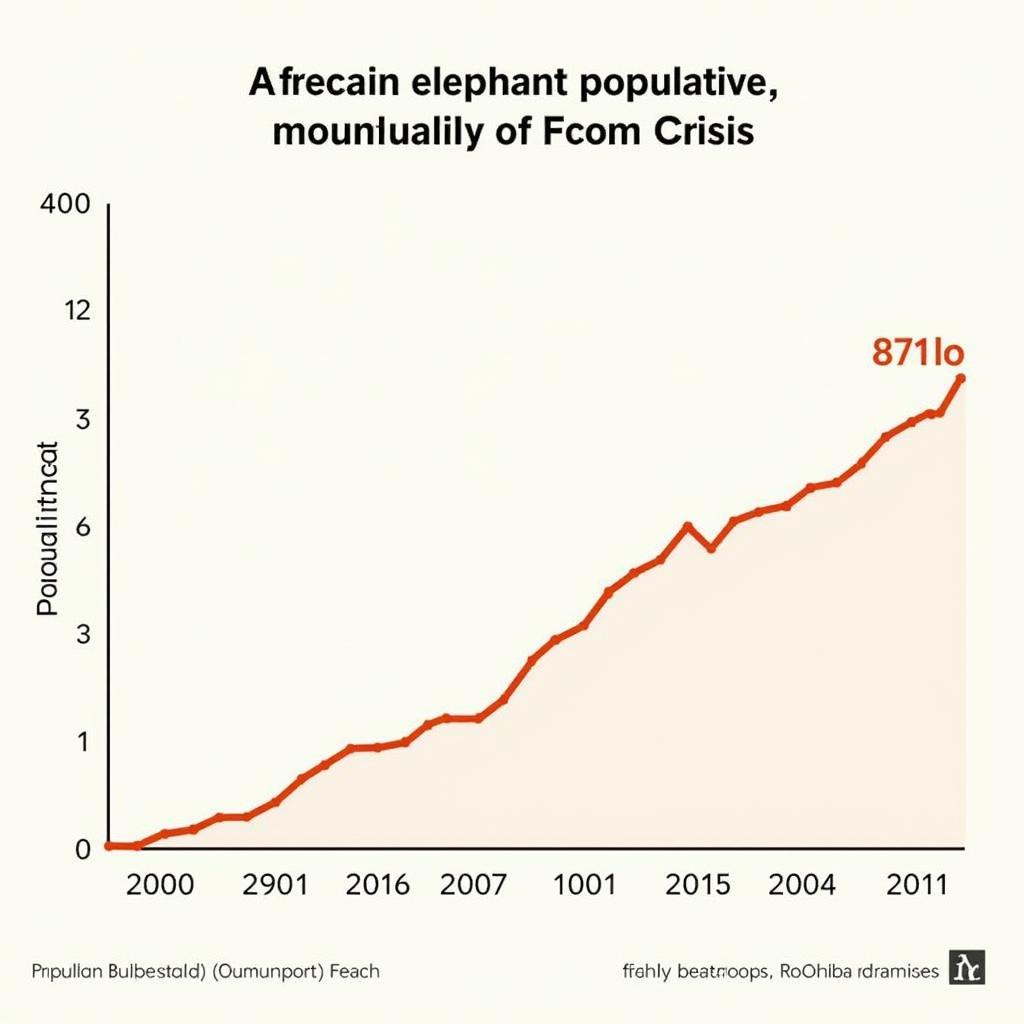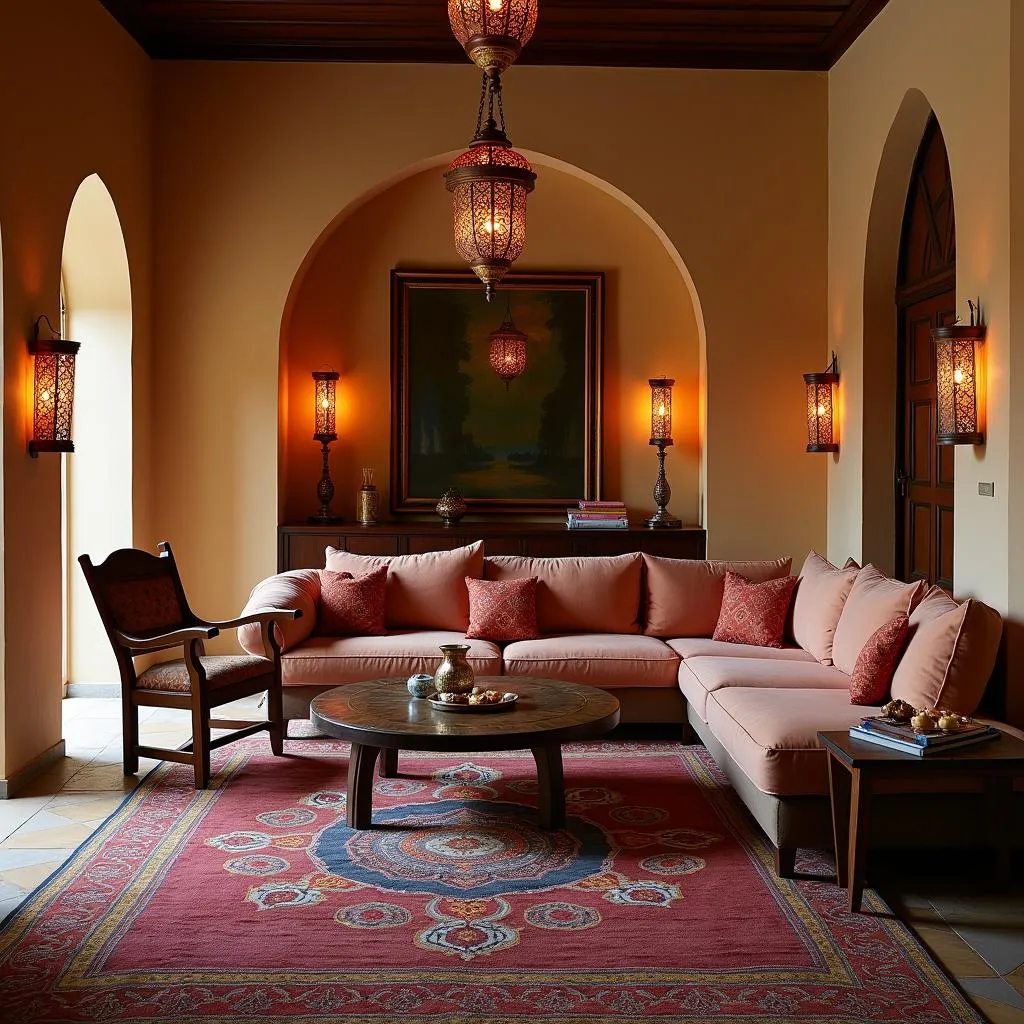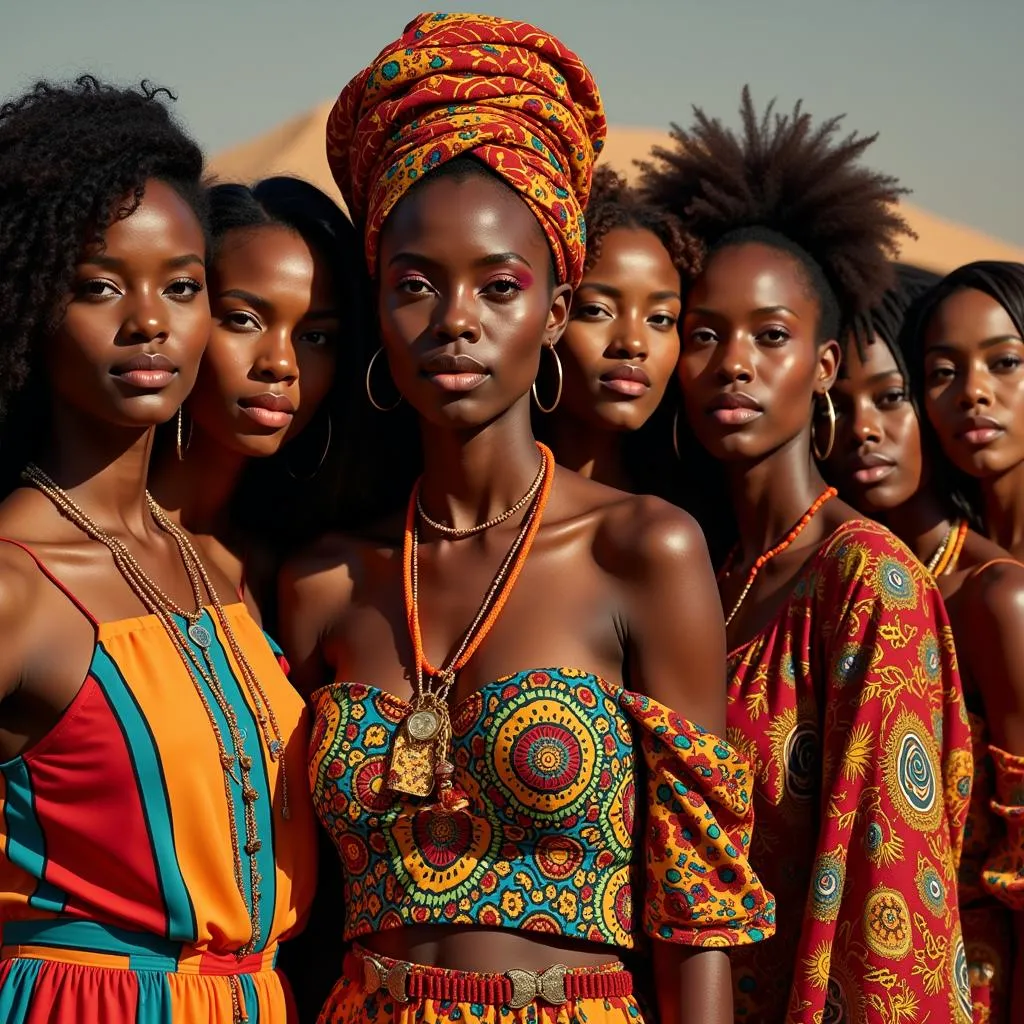The Enchanting World of the African Horn Musical Instrument
The African Horn Musical Instrument holds a captivating presence in the diverse soundscape of the continent. More than just tools for creating music, these instruments embody cultural significance, serving as storytellers, spiritual conduits, and symbols of heritage. From the echoing calls of the Kudu horn to the intricate melodies of the Oruk, African horn instruments offer a fascinating glimpse into the heart of Africa’s musical traditions.
A Symphony of Shapes and Sounds: Exploring Different Types of African Horn Instruments
African horn instruments, crafted from natural materials like animal horns, wood, and gourds, showcase an incredible range of shapes and sizes. This diversity reflects the ingenuity of African artisans and the instruments’ various roles in different cultures.
Animal Horns as Instruments: A Testament to Nature’s Music
Many iconic African horns utilize actual animal horns, highlighting the close connection between nature and music in African cultures.
- Kudu Horn (Southern Africa): Known for its deep, resonating sound, the Kudu horn is often used for ceremonial purposes, communication across distances, and even as a hunting aid.
- Cow Horn (Various Regions): The versatile cow horn, often adorned with intricate carvings, finds its place in various musical ensembles and rituals.
- Antelope Horn (Eastern Africa): Characterized by its high-pitched, piercing tone, the antelope horn is often employed in royal courts and ceremonial processions.
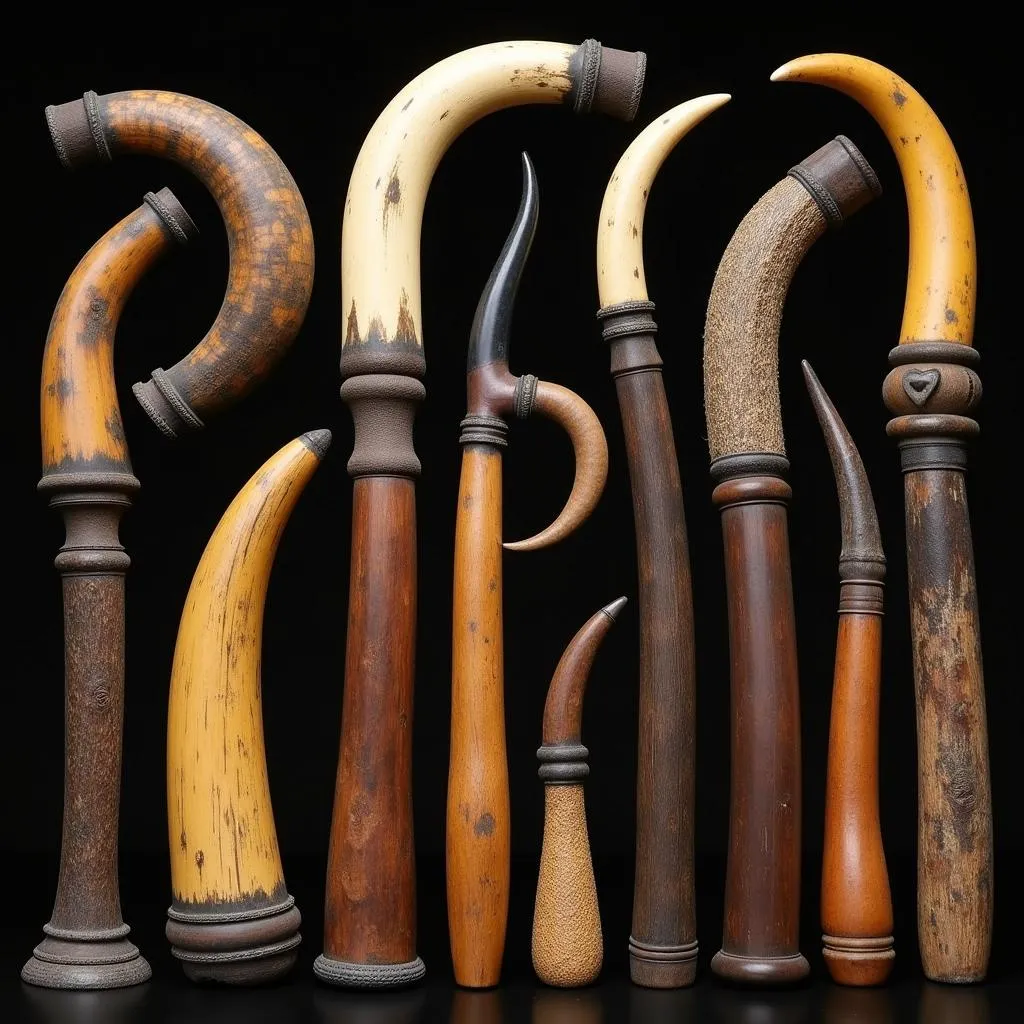 African Horn Instruments Variety
African Horn Instruments Variety
Beyond Animal Horns: Expanding the Horizons of Sound
While animal horns form a significant part of this instrument family, African ingenuity extends to crafting horns from other materials, further enriching the continent’s sonic palette.
- Oruk (Nigeria): Made from a gourd with a single reed, the Oruk produces a soft, mellow tone and is often played during storytelling sessions and social gatherings.
- Algaita (West Africa): Similar to a double-reed instrument, the Algaita boasts a powerful, resonant sound that features prominently in ceremonial music and festive celebrations.
- Kakaki (West Africa): This long, trumpet-like instrument, usually made from metal, commands attention with its imposing size and powerful, resonating sound, often reserved for royalty and significant occasions.
The Cultural Significance of African Horn Instruments
African horn instruments are much more than musical tools; they are deeply ingrained in the cultural fabric of communities across the continent. Their presence resonates in rituals, ceremonies, and everyday life.
Bridging the Gap Between the Physical and Spiritual
In many African cultures, horn instruments serve as a link between the physical and spiritual realms. The deep, resonating sounds are often believed to carry messages to ancestors or deities. For instance, the African Bulgarians might use specific horn melodies for communication with spirits.
Music as a Storyteller: Preserving Traditions Through Sound
African folk music thrives on the expressive power of horn instruments. The music often narrates historical events, myths, and legends, ensuring the transmission of cultural knowledge through generations.
Celebrating Life’s Milestones: Horns in Festivals and Celebrations
From weddings and harvest festivals to rites of passage, African horn instruments play a vital role in marking life’s significant events. Their vibrant melodies infuse these occasions with joy, solemnity, or any emotion the event demands.
The Enduring Legacy of African Horn Instruments
While modern music continues to evolve, African horn instruments hold steadfast to their cultural importance. They remain a source of pride, connecting younger generations to their heritage and captivating audiences worldwide with their unique, evocative sounds.
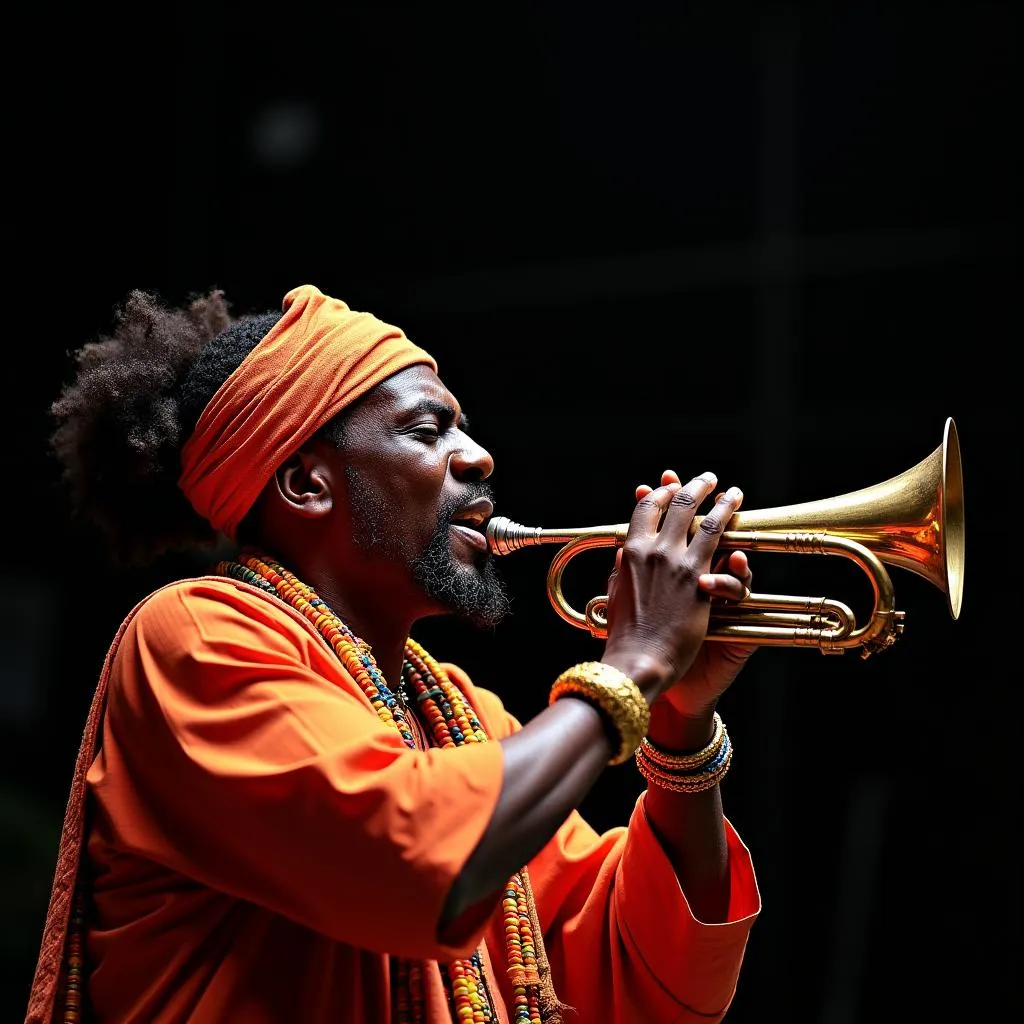 African Musician Playing Horn
African Musician Playing Horn
Today, you can explore the world of African instruments through museums, cultural centers, and even online platforms dedicated to preserving and celebrating these rich musical traditions. The echoing sounds of the African horn musical instrument continue to resonate, inviting listeners to connect with the soul of Africa and its enduring musical legacy.
FAQ: Delving Deeper into African Horn Instruments
1. What is the most common material used to make African horn instruments?
While animal horns are popular, African artisans also utilize materials like wood, gourds, and even metal to craft these instruments.
2. Are African horn instruments used solely for music?
No, their significance extends beyond music, serving as communication tools, ritual objects, and symbols of cultural identity.
3. Are there different playing techniques for African horn instruments?
Yes, techniques vary significantly depending on the instrument’s design and cultural context, ranging from buzzing lips to using reeds.
Exploring Further:
- Learn about the 7 types of African music and discover the diversity of the continent’s musical landscape.
- Uncover the fascinating world of African artifacts UK and their cultural significance.
Need help exploring the rich world of African culture? Contact us at +255768904061, email kaka.mag@gmail.com, or visit us in Mbarali DC Mawindi, Kangaga, Tanzania. Our team is available 24/7 to assist you.


